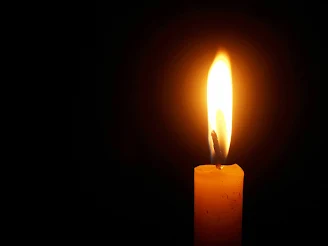THE CHEMICAL NATURE OF FIRE: A DETAILED ANALYSIS, PART-2
Last time, I discussed the basic concepts required to understand the chemical nature of fire. Now let us shrink into the atomic level where electrons whiz around their atomic nucleus at the speed of light!
Let us begin by asking a fundamental question-How does a fire start?
Every combustible substance/fuel needs to be ignited in order to start a successful fire. That means, we need to supply a sufficient amount of external energy to break apart the molecular bonds, jump-start its reaction with oxygen in the air and undergo a successful combustion reaction. For example, H₂ is burned in O₂ by applying a high voltage electric discharge, whereas a matchstick is lit by friction.
Lighting a Matchstick: I hope you all know what a matchstick looks like. The surface to be struck on a matchbox is made up of powdered glass that supports friction with the match head, and a substance called red phosphorus, which helps in the ignition.
The match head is made up of Antimony Trisulphide[Sb₂S₃, fuel], Potassium Chlorate[KClO₃ , a catalyst i.e. a substance that aggravates a chemical reaction], Ammonium Phosphate[ (NH₄)₃PO₄, to prevent excess smoke] and finally Paraffin Wax(for vaporization and to aid in combustion).
Striking the match-head with the strip of powdered glass and phosphorus causes friction, which in turn generates heat(mechanical energy gets converted to heat energy). This heat energy breaks the structural integrity of red phosphorus, thereby converting it into white phosphorus. White phosphorus is extremely unstable and readily blows up in air. This freshly formed white phosphorus reacts with KClO₃ and creates fire. KClO₃, now oxidizes Sb₂S₃ and forms a lasting flame. The paraffin wax now helps the stick of wood to catch fire. The heat liberated in this process also produces Sulphur Dioxide(SO₂). The little amount of smoke that arises is due to some unburnt fuel, microscopic bits of wood pieces and soot.
Here are the necessary equations:
P₄(red, s)→P₄(white, s)
3P₄(s)+10KClO₃(s)→3P₄O₁₀(s) +10KCl(s)
3KClO₃(s)+ Sb₂S₃(s)→ Sb₂O₃(s)+3SO₂(g)+3KCl(s)
Hence, we have a glowing matchstick. And now let us move on to lighting a candle. In these things we see that chemistry has its own beauty. All these reactions about a matchstick happen in the blink of an eye, while we are left with a little fire as in the image below.
 |
| A Burning Matchstick source:Photo by form PxHere |
Lighting a Candle: A candle comprises a wick, made up of some absorbent material that can support capillary action and burn. The candle stick is made from paraffin wax, a derivative of petroleum refining. Paraffin is a heavy hydrocarbon with the formula C₂₅H₅₂ and has a flash point of 200-240℃
On bringing a lighted match closer to the wick, heat from the fire melts the wax. The wax vaporizes quickly and the wick draws up the melted wax by capillary action. The hydrocarbon molecules now break down and recombine with O₂ in air to form CO₂ and H₂O. This we see as a bright burning flame.
 |
| The warm yellow flame of a candle. source: Photo by form PxHere |
Wood, Charcoal & Coal: These are pretty similar as all burn without violent flames. This happens because wood/charcoal/coal is a solid fuel and it cannot form flammable vapors. They burn in a process called smoldering which I have explained in part-1.
To initiate combustion of wood we definitely need to supply external energy. Wood is actually cellulose, a long-chain natural bio-polymer made by plants. Heat breaks the hydrocarbon chain of the polymer, and produces isolated hydrogen and carbon atoms. These react with oxygen in air to form CO, CO₂, and H₂O vapor.
Coal is basically an allotrope of carbon. External heat acts on the surface of this solid fuel and starts the combustion reaction. Same is with charcoal.
 |
| Coal Forge of a Blacksmith source:Photo by form PxHere |
So, these solid fuels burn slowly and steadily for a long period of time. They have low volatility and thereby cannot burst out into flames. Whatever little amount of flame we see is due to the presence of some other volatile compounds(impurities) that vaporizes into flames. But the only problem is that wood/charcoal/coal do not undergo complete combustion. This happens because wood or coal do not actually burn in the common sense. External heat causes pyrolysis to occur at the surface of wood or coal. The products from pyrolysis remain unburnt and they produce soot, and harmful oxides of carbon, sulfur, and nitrogen. These oxides then mix with water vapor in air and come down as poisonous acid rain, posing harm to life and property.


Comments
Post a Comment